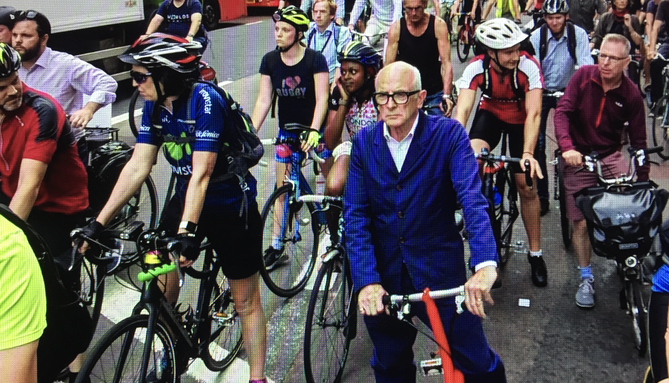|
Architects have been dealing with security in buildings for centuries. Medieval cities were defined by their walls. Castles, some of our greatest early buildings. were predicated on the need for protection - castellation, drawbridges, turrets were part of the architectural language; in Italy and Spain ground floor windows were protected by elegant filigree ironwork. In London the railings of Georgian London, of houses and squares, are one of the great delights of the city. Today cities are crammed with the tools of the security services, yet they are disguised, hidden or ugly and utilitarian.
I first became aware of the impact that security could have on modern architecture - which throughout the 20th century had been celebrating openness, light and accessibility - when the 1972 Spence and Webster proposals for an extension to the Palace of Westminster, which included a large open public space beneath the raised up building, were abandoned because of fears that the IRA might blow it up. Since then I have seen security play a larger and larger role in the design of buildings - from the obvious controls in the reception of office buildings to disguised bollards, blast proof glazing and things that no one without clearance even knows are there. But we have never really come to terms with how we deal with the problem in design terms. Today the walls around the City of London and their iconic gates have been replaced by the ring of steel, a policeman in a plastic booth and multiple CCTV cameras connected to a central database. The Houses of Parliament are surrounded by hideous, temporary steel barriers. Just up the road in Whitehall these have been subtly integrated into stone balusters indistinguishable from their 18th and 19th century setting. Plans for the land around the US Embassy in Nine Elms use that most discrete security device - the ha-ha, supplemented by a whole set of gizmos hidden in the reeds and grasses of the landscaping. It is a massive improvement on the grim fences and walls with which the US likes to surround their embassies in other cities. I went to a presentation on this very topic by one of the project managers of the Kieren Timberlake building, who was not at all amused by Wandsworth Planning Department’s insistence that the land surrounding the Embassy should connect with the local environment rather than turn its back on it. Are security devices are either hidden - like in Whitehall and Nine Elms - because we cannot come to terms with the reality they represent? Are they temporary, as in Parliament Square, in the hope that the world will soon return to ‘normal’. Even security personnel are disguised, muscled men in tight executive suits politely stop you to check your credentials as you enter a city office block - in contrast, say, to the guards at Buckingham Palace whose role is made more obvious by their attire. Should we, as in previous unstable times accept that insecurity is the norm and design for it - should we make the elements of security more obvious both as a deterrent and as something that expresses more honestly the world we live in? While cycling with a group across the US, we stopped in Pierre, the capital of South Dakota. On Saturday morning we walked around the city and entered the State Capitol. There were no security guards, no barriers, no cctv. A place far from the political tensions of the rest of the world or indeed of the US itself. It brought home to us the restrictions and controls that we now live with and accept, yet try to disguise in the hope that the need for them will go away.
1 Comment
|
Archives
October 2020
Categories |

 RSS Feed
RSS Feed